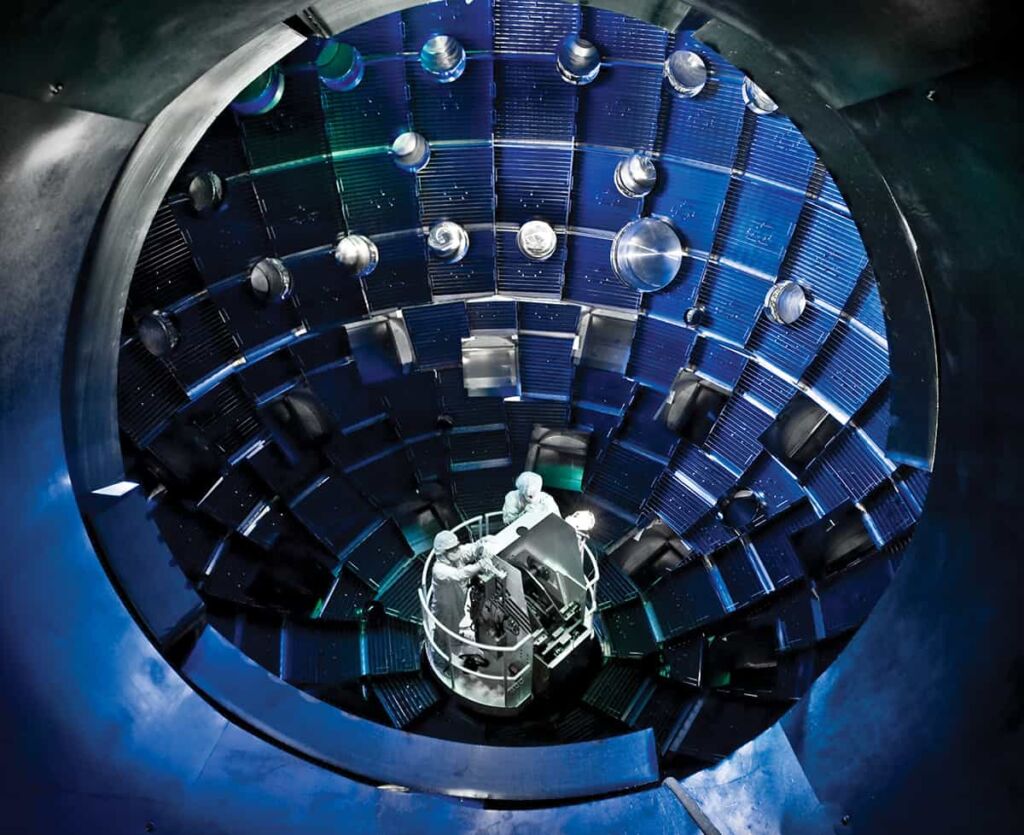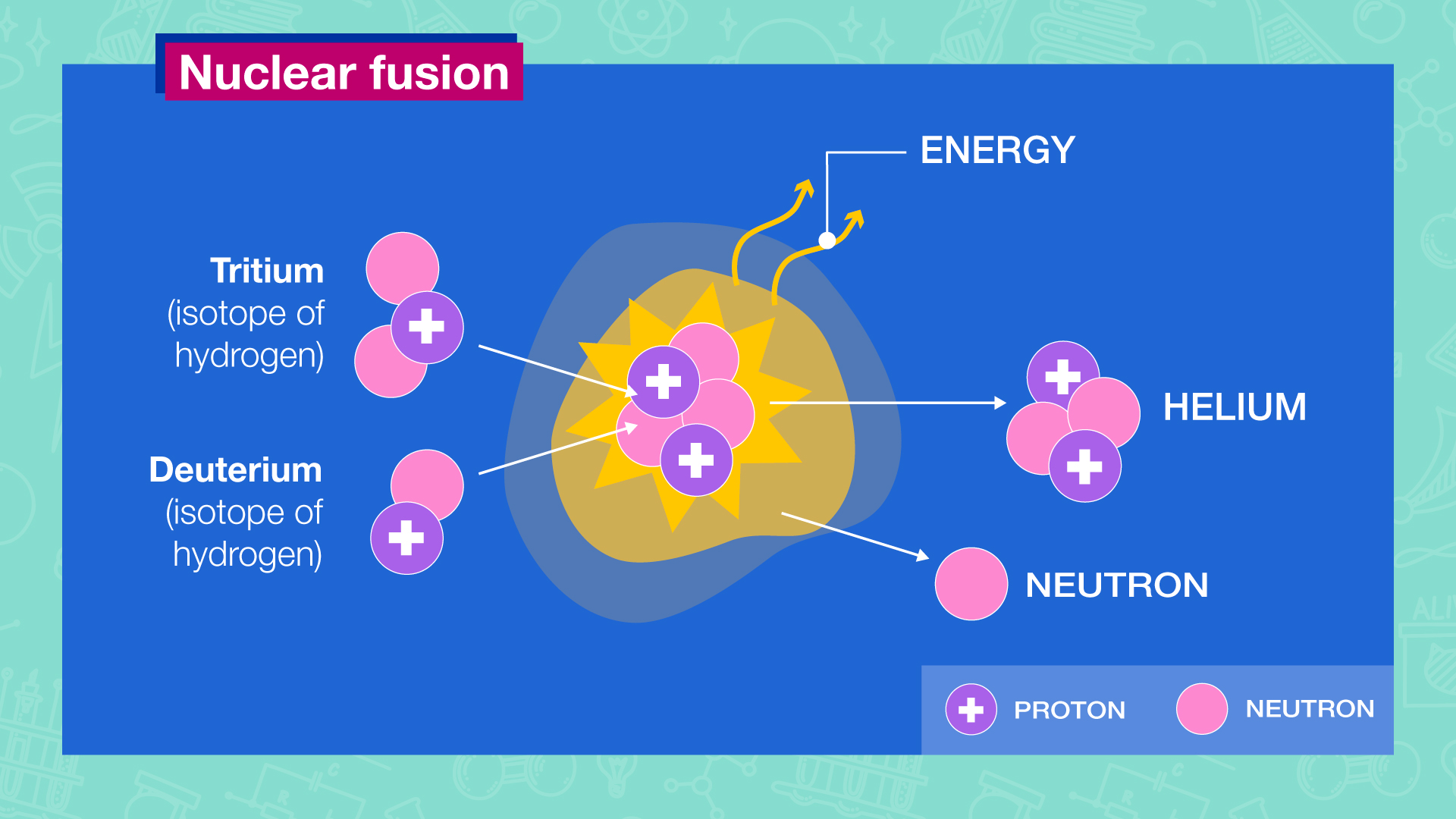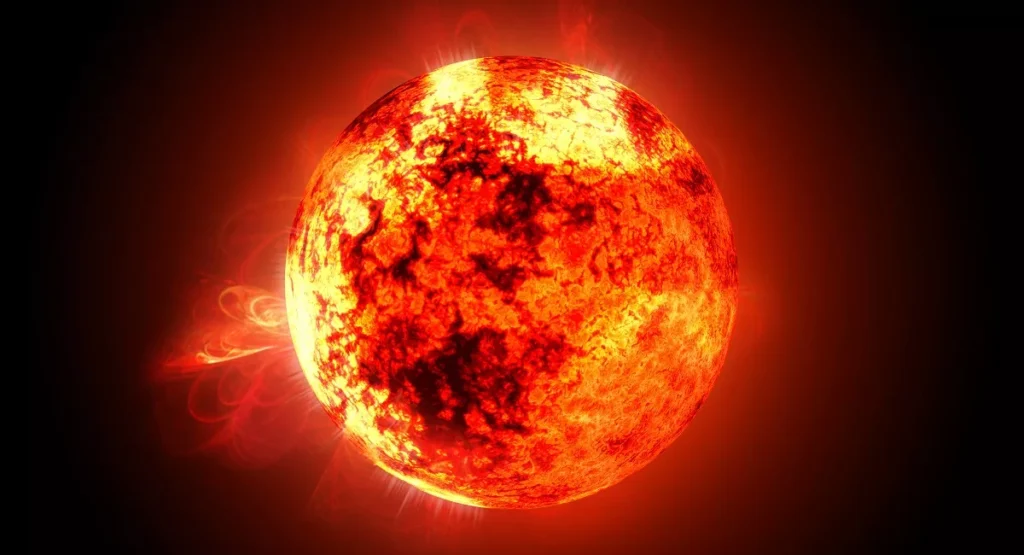Fusion ignition has been achieved on earth! The first fusion reaction to produce a net positive energy gain has made history on December 5th of 2022. This monumental day in power resulted from years of development before researchers at the National Ignition Facility and 192 lasers saw this net gain in power.

National Fusion Facility. Courtesy of Physics World.
What is fusion?
Fusion is the process by which two lighter atoms fuse together to create another singular heavier atom. For example, hydrogen’s heavier forms deuterium and tritium can fuse with one another to create forms of helium.

Nuclear fusion produces energy in addition to nuclei and neutrons. Image courtesy of iaea.org
Fusion reactions take place when matter is in a plasma state. It is in this state that the nuclei of atoms have enough energy to overcome the electrical repulsion of protons. When the particles get close enough to one another the attractive nuclear force will be strong enough to keep them together.
The process of fusion occurs most often in stars. Fusion of gasses like hydrogen and helium fuel the stars. This is because such massive bodies of mass have extremely high temperatures in conjunction with strong gravity at their cores. These conditions force atoms to fuse and produce energy at around 10 million degrees Celsius.
Fusion produces energy by converting mass into energy. This is seen in how fused elements have less mass than its forming element’s masses combined. In the image above the energy comes from the missing mass which has the relationship described by Einstein’s famous E= MC^2.
Conditions for fusion
Fusion requires very intense conditions. For one extremely high temperatures need to be achieved, around 10 million degrees. This is to produce the needed plasma state for the reaction. Additionally a sufficient density of ions must be present in the same space. Fusion will only occur if both conditions are met for a sufficient confinement time. These conditions are called Lawson’s criterion.
It bears remembering that plasma is the state that matter becomes after achieving a hot enough temperature. In the case of producing fusion ignition, lasers heat up hydrogen to make plasma. Using lasers to make plasma has applications in more than just fusion power. For instance, it has applications in making light. If you are interested in this topic you might also want to read our blog post on plasma light sources.
What is fusion ignition
Fusion ignition is a fusion reaction that is self sustaining. This is possible because the energy that comes off during the ration can actually heat the fuel faster than it will cool. In other words fusion ignition is a self heating/ heat producing state.
One could think of it as mankind igniting a fire. Except instead of wood being sparked to burn and produce heat it is sparking hydrogen to produce heat.

Schematic of the stages of inertial confinement fusion using lasers. The blue arrows represent radiation; orange is blowoff; yellow is inwardly transported thermal energy. Image courtesy of wikipedia
For the schematic diagram above:
- Laser beams or laser-produced X-rays rapidly heat the surface of the fusion target, forming a surrounding plasma envelope.
- Fuel is compressed by the rocket-like blowoff of the hot surface material.
- During the final part of the capsule implosion, the fuel core reaches 20 times the density of lead and ignites at 100,000,000 ˚C.
- Thermonuclear burn spreads rapidly through the compressed fuel, yielding many times the input energy.
Fusion energy as a clean power source
Fusion, just like fission, is a process that produces energy without producing greenhouse gasses like carbon dioxide. Additionally fusion has such specific conditions that should a fusion system fail the plasma will just dissipate. This additional safety in addition to increased power production makes fusion a sought after fuel source. Fusion ignition could generate up to 4 times more energy per kg of fuel compared to fission. Unlike fission, nuclear fusion produces little to no radioactive nuclear waste.
We get power from fusion by harnessing the heat it produces. In concept, we can use the heat from fusion just like we use the heat from burning natural gas or coal. Solar and wind power sources require large amounts of land while not meeting our power demands. Fusion has the potential to be able to meet our power demands with clean eco friendly power. All that power can come from fusion while not needing massive plots of land.
Fusion ignition results in 2022
Now for the incredible milestone. To better know what was done consider the following: The ignition facility uses lasers to create plasma of deuterium and tritium. These ultra-high power lasers melt a frozen cylinder of hydrogen surrounded by diamond. The lasers continue heating the hydrogen to the point of ignition.
To start the ignition researchers input 2.05 megajoules of energy and output 3.15 megajoules. The reaction also outputs a flurry of x-rays. The net energy gain was around 1.1 megajoules. These figures do not yet account for all the actual energy needed for powering the facilities. However, before fusion power production becomes commercially available we need to pass more milestones. nonetheless it will someday become commercially available and humanity will increase in power production capacity.

Nuclear Fusion in Stars. The stars generate their heat by using fusion reactions in their core. Image courtesy of Shutterstock.
Conclusion
While this is most certainly a milestone it is a long ways away from becoming humanity’s primary power source. Fusion power is the power source of the stars, and we are another step closer to harnessing it here on earth. This milestone sets us one step further to becoming a type 1 civilization on the Kardashev scale. As we make strides in power and technology we can marvel at just how amazing our milestones are becoming. From the igniting of the first fire we find ourselves moving forward to igniting our first fusion.
